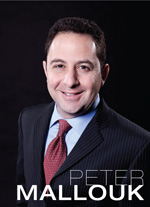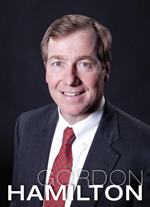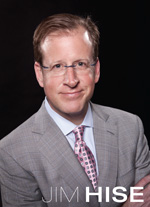
He graduated from the University of Kansas with four majors. Additionally, he has a law degree, an MBA and his certification as a financial planner. But his most formative educational experience might well have been what he learned at home. “I come from a family of physicians and learned first-hand how frustrating it can be for someone busy to get their arms around their overall financial picture,” he says.
So the idea of helping people secure their financial futures was hard-wired into him. But he would do it his way at Leawood-based Creative Planning, where he is president and chief investment officer: “Knowing that most of the advisers are selling their own funds to some extent or another motivated me to create a truly independent model where a busy individual could confidently deal with a competent team that wasn’t pushing their own funds.”
It is a message that resonates with his clients, 95 percent of whom have come from other firms. His company provides a wealth of planning services—for investments, charitable giving, retirement needs, tax strategies and estate planning—for high net-worth clients in almost every U.S. state, a combined asset pool of more than $2.5 billion.
As the firm has grown, Mallouk has harnessed a trophy-case busting assortment of honors: He’s a Top 10 figure on Barron’s list of America’s 100 best wealth advisers, and has made the Robb Report’s Top 100, as well. Magazines like Medical Economics, Bloomberg Wealth Manager and Fortune have paid similar tributes, and Boomer Advisor designated him No. 1 in America for Baby Boomer investors.
To hear him explain it, successful asset management, he says, comes from flipping the map over to start with the destination. “As with all the advisors at Creative Planning, I take a big-picture look of what a client is trying to accomplish before getting into any potential solutions,” he says. “The key is to not impose your own idea of what the end result should be, but rather to determine the priorities and advise as to various options to achieve the intended outcome.”
The bottom line, then, is the bottom line.
“We are very proud of our success with our investment approach,” Mallouk says, citing as an example of the firm’s competencies its response to the events of 2008 and the huge market swings that have become commonplace since then. “The assets we manage have grown six fold since 2008, without acquisitions,” he says. “Among the prerequisites to success are to control taxes, keep fees down, have a very disciplined trading policy, and stay away from having in-house funds that create a conflict of interest.”
Mallouk and his wife, Veronica, have three children.

For 15 years, the late Ben Edwards drilled the message into Marty Bicknell at A.G. Edwards. “Ben repeated his credo every day: Client first, employee second, firm third,” Bicknell says. “Ben shaped my vision of what a client-focused firm looked like. He taught me more than the skills necessary to be a good wealth adviser—he taught me about priorities.”
Bicknell certainly nailed that part of the lesson. He left the St. Louis-based firm in 2006 to launch Mariner Wealth Advisors in Kansas City with $300 million in assets under administration. Today, he oversees a family of investment firms managing $13 billion. Along the way, Bicknell fused the lessons he’d learned from Edwards with some he picked up closer to home.
His father, Gene Bicknell, had built National Pizza Co. into the largest Pizza Hut franchisee in the world, then used the proceeds from that venture as a springboard into various other companies from his base in Pittsburg, Kan. Armed with that business pedigree and a finely tuned sense of entrepreneurship, the younger Bicknell saw the opportunity to build the family fortune into something that would transcend generations.
That perspective, Bicknell says, is exactly what Mariner does today for its clients, as well. “We are focused on helping our clients build a legacy for future generations of family and business leaders,” he says. “That means we focus on our clients’ long-term financial peace of mind. It means that before we do anything else, we work to understand the client’s goals for the future, and we build wealth solutions designed to meet those specific goals.”
His roots in southeast Kansas have been the key to success. Fourth and Broadway in downtown Pittsburg is a long way from Wall Street in more ways than one. Bicknell recognized that hugely talented people, overlooked by larger firms because they didn’t have Ivy League credentials, were in ample supply. “Because I’ve lived my whole life in Kansas, I understand that sometimes the very smartest, most driven and loyal people live right next door,” said Bicknell, whose own degrees came from Pittsburg State. “What they do all have is a competitive fire, the passion that drives them to do great things. I look for that passion above all else, because more often than not, it is reflected as dedication and commitment to the client.”
Today, Mariner employs 35 financial advisers. Bicknell’s goal is to have 135 on staff within three to five years. A corresponding growth arc for assets managed would put Mariner in the $50 billion range—and perhaps among the 20 largest wealth management firms in the U.S.
“Our success to this point has been mainly due to our ability to identify our clients’ challenges and create solutions to help solve those challenges,” Bicknell says. “As long as we continue with this approach to providing innovative solutions, I believe we will be successful.”

The best measure of Gordon Hamilton’s capacity for counter-intuitive thinking may be reflected in the way he recalls Oct. 19, 1987. Nearly a quarter of a century ago, the stampede of a five-year bull market went right over a cliff. The Dow Jones Industrial Average shed 508 points, a 22.6 percent loss that still stands as the biggest daily percentage decline in the history of the index. Many of those who lived through it recall the raw fear and the newfound appreciation of risk instilled that day.
Not Hamilton: “If anything, I think that was a nice proving point, because it showed more than ever that people do need advice,” says the managing director for Morgan Stanley Smith Barney in Kansas City. “The stock market was thought of as bulletproof until that day,” he says. “People are more inclined to reach out to an adviser than a stockbroker, so it was a signature moment for financial planning in general.”
Hamilton has always claimed to be not a stock broker, but a planner, “because a planner has an objective in mind that is more important than how much we’re going to make next week,” he says.
A native of Kansas City who attended what was then Pembroke Country Day School, Hamilton earned his undergraduate business degree at Southern Methodist University, then worked in Morgan Stanley offices in Dallas and Chicago before returning to Kansas City. Through the years, he has steadily added clients and built their portfolios to an aggregate worth of $1 billion at the end of 2011, and has been ranked among a handful of the Kansas City area’s top portfolio managers ranked by Barron’s.
Hamilton’s success is grounded in getting clients on board with his vision for their own success. “In my world, the ideal client wants to have a financial adviser—someone who wants to go out and enjoy retirement, not worry day to day about their money, because they know it’s being taken care of.” The opposite of that, as most managers can attest, is the client who hears snippets of information and believes he knows everything there is to know about managing investments.
How to get that fellow moved into the “ideal” group? “For someone doing a 401(k) on his own for 25 or 30 years, once they recognize that they have to relinquish control of that, I tell them it’s no longer of a question of accumulating money, but of distributing money—you’ve never done that, and we have,” Hamilton says. “That disarms them a little bit once they recognize that there’s a different objective than the one they were working with prior to retirement.”
Which is key, he says, to fulfilling his personal goal: “Helping them make a seamless transition from working to retirement.”

Ask the right questions, says Jim Hise, and you get the right client. For Hise and his Howe/Hise/Lowry team at Merrill Lynch, a successful relationship begins before the first client dollar is entrusted to them. “Our values and our clients’ values are a very important part of how we go about doing our business,” he says. “It is normally where the engagement process starts with new clients: What are your beliefs and values? What do you want to accomplish during the rest of your life? What about your legacy, your dreams?”
It is, he says, a question of values.
“My Mom and Dad were a big influence teaching us to be grounded with good family values,” Hise says. “Growing up in Prairie Village and attending Kansas State, I have been surrounded by Midwesterners my entire life. They cherish honest, down-to-earth people who listen and understand them.”
From that foundation, his team at Merrill Lynch has compiled a client base with more than $1 billion in assets. Worth magazine has designated him a Top 100 adviser, and Barron’s too, has recognized Hise’s skills in each of the past two years with its list of America’s 1,000 best wealth advisers—among a handful of those in the Kansas City area.
He made it there by a bit of a circuitous route. Before joining Merrill Lynch in 1993, he had been a corporate fundraiser and a consultant in the non-profit sector. Somewhere along the way, he began to look at money differently. “Wealth and wealth management are important and emotional aspects of our lives,” Hise says. “I thought it would be challenging as a financial counselor to be in the middle of that with families. I was intrigued by the capital markets. I wanted a profession which allowed me to stay in town because my family (wife, Megan, and four children) and extended family live here.”
Talk about the stars aligning—Hise scored on all three fronts. Two decades after making that career adjustment, he’s developing wealth-management strategies for corporate executives, entrepreneurs, ultra-high net worth families, businesses, and—not forgetting where he started out—non-profit institutions.
The responsibility of managing the financial futures of his clients, he acknowledges, is ever-present. But having the right clients, and doing right by them, makes that burden tolerable. “Our best clients have all of their assets with us as we serve as their family office,” says Hise. “We prefer it that way. It is easier to manage. It is more tax efficient. There is pricing power. Many of our families have multigenerational relationships with us.” And when you have three generations under the same financial roof, he says, “it makes things easy for everyone: Gifting to grandkids, family conferences, estate distributions, charitable giving and planning.”